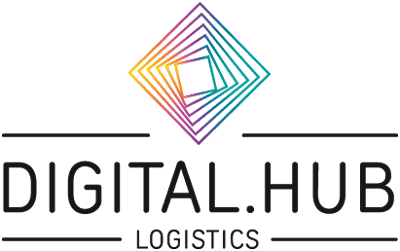
Blog
5 „Lessons learned“: What makes Start-ins successful
There are many different formats and concepts for digital transformation. More and more medium-sized companies are relying on start-ins. Compared to traditional innovation departments, flexible, independent digital teams, such as those represented in the Digital.Hub Logistics, have significant advantages. Five “lessons learned” – documented by Hub Manager Maria Beck – show what makes the start-ins so successful.
cFirst, a few words about the concept start-in – created by the Digital.Hub Logistics: Start-ins are digital teams from companies that approach digital projects with a strong start-up mentality. While the start-up as a company starts from scratch, the start-in is often backed by decades of successful operations, usually from medium-sized companies. With the start-in, the company is now going new ways in driving the digital transformation of products, processes and business models. The Start-in is designed as a company within the company. According to the experience of the Innovation Coaches, this model works if the start-in…
1 … receives the support of C-level management. CEO, CFO & Co. – the top executives of a company – must make the start-up a matter for the top management. Accordingly, the start-up and its goals must be firmly integrated into the corporate strategy as a separate unit. Depending on the corporate strategy, the start-up can be assigned to the topics of innovation or digitization. The start-up can, but does not have to, be managed as a separate GmbH.
2 … can completely concentrate on its own work. A start-in should be staffed with at least two full-time positions. If employees from the parent company are transferred to the start-in and this is not possible full-time from the start, fixed days have to be defined during the transition phase in which the employee only works for the start-in. Simultaneous work in another unit of the company has proven to be unsuccessful. Employees should work in only one place or office. One option is to use co-working spaces in which like-minded companies work. In Digital.Hub Logistics, for example, start-ins and start-ups work side by side and inspire each other – also within the framework of community projects.
3 … can develop products quickly – cue MVP. Minimum Viable Products (MVP) have become an indispensable part of research and development. There are two promising approaches for start-ups: MVPs can be handed over to the parent company for implementation as proof of concept, provided with recommendations for action, or they can be further developed to prototypes in the start-in itself. By the way, both approaches are represented among the members of the Digital Hub Logistics and each leads to the desired success. Cooperation with start-ups for MVP development, but also with scientific institutions, can provide the start-ins with additional flexibility.
4 … is far enough away from the daily business, but close enough to the relevant decisions. Start-ups need organisational and physical freedom in order to apply agile or user-centred innovation methods that have not yet been established in the parent company. However, in order for innovations to be integrated into internal structures, insight into internal processes and knowledge of internal challenges are essential. Accordingly, regular and transparent cooperation with (operative) employees of the parent company is important.
5 … has direct access to research facilities. Start-ins benefit significantly if they establish themselves in the environment of scientific or research institutions. However, this also requires that this innovation ecosystem is also usable for the start-in, i.e. that access to experimental fields or the exchange with local scientists is contractually regulated or at least institutionalised. Membership in a network such as the Digital.Hub Logistics guarantees the necessary support for the start-in company.





